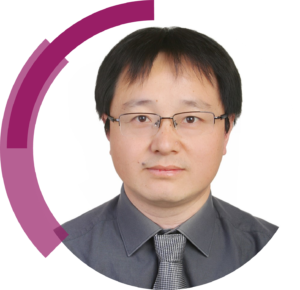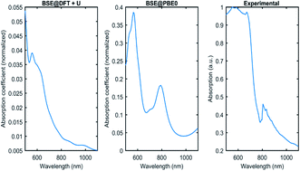What happens to your paper after submission?
Step by step assessment of papers by academic editors at RSC Advances
Meet the Editor:
Professor Leyong Wang is based at the Institute for Supramolecular Chemistry and Smart Materials at Nanjing University. He handles papers in the areas of drug delivery, organic catalysis, synthesis & assembly of nanomaterials.

Professor Leyong Wang, Nanjing University
1. What is the most common reason for rejecting a manuscript without review?
“As the associate editor, I am very pleased to receive and read well-organized and well written manuscripts with high quality and exciting results. Therefore, we could provide more excellent papers to our audience of our journal. When I receive a new submission, I will read the manuscript quickly, normally in 5-10 minutes.
Firstly, the cover letter is read, which is regarded as the dialogue between authors and Associate editors. From the cover letter, I would like to know the important background and the exciting results of the present research. Why did the authors think the contents of this manuscript are exciting and challenging work?
Then, I will read the Graphic abstract and abstract quickly to know if the authors have clearly shown the exciting and informative results in present manuscript, and then if its contents lie inside the stated aims and scope of the journal.
Next, I will read the manuscript quickly while checking the References and Supporting information. From the introduction session, I would like to know if the authors establish the background of the problem studied and if the discussion only repeats the results but does not interpret them with the help of suitable literature cited. Some times, I realize that submitted manuscripts do not follow the format specified by our RSC journals. To be frank, it is a not pleasurable feeling during a quick reading. It means the authors did not read the authors guides of RSC Advances during the preparation of their manuscript. The authors should convince the associate editor, on behalf of readers to some degree, that the research is both sound and important through their writing.”
Last but not least, the professional supporting materials is very important to prevent the manuscript from being prescreened. I would like to see a clear and professional description of experimental procedures. For the synthetic experiments, the reported compounds here should be given the physical data, for example 1H NMR and 13C NMR with in professional style. I am sure, without the professional writing of experimental session and well updated suitable references, it is not easy to believe the reliability of results and discussion of a submitted manuscript.
I fully understand the feeling of authors when they receive the reject letter without reviewer reports. I do hope this kind of rapid decision is seen as favorable, because it allows the authors to quickly turn around the papers for submittal to a different journal, or to re-organize and re-write their manuscript for re-submission to us for consideration quickly. Of course, I do hope that this decision (Prescreen without review) will not discourage the authors from submitting the authors’ future work to us.
2. What is the best piece of advice you could give a submitting author?
“Writing a professional paper is a challenging job for our authors. In fact, it is not easy to give the best piece of advice. If I have to give one, in my opinion, in the process of writing research papers, it is would be better to give the draft outline of this research paper, knowing the highlights of your research papers, give a catchy and informative title to your research paper, then continue writing an abstract in a short paragraph which provides key information of submitting paper in an easy-to-grasp manner.
I also have a reminder here. Every author is suggested to read the pre-submitted manuscript carefully with the arrangement of the corresponding authors. This action could remove some typos and grammar errors, even such low-level “stupid” mistakes.
In the end, I always warmly welcome the authors to submit their high-quality, and exciting research work to our RSC Journals with good preparation and wish our authors continued success in their research endeavors.”
Meet the Editor:
Professor Andrea Pucci is a Full professor in Industrial Chemistry at the University of Pisa, Italy and handles papers related to solar energy, optical materials and nanomaterials.
1. What is the most common reason for rejecting a manuscript without review?
“Mainly due to the lack of novelties after a literature survey. Then, when the manuscript are reported with poor care in general of the RSC Advances regulations.””
2. What is the best piece of advice you could give a submitting author?
“In the introduction, clear statements of the novelties reported should be provided. Then, comparison of the main outcomes with those from the literature are appreciated.”
We hope that you find these insights from Professor Wang and Professor Pucci useful while writing your next paper!

Tune in next week for our final set of publishing tips from our academic Associate Editors !
You are welcome to send in any questions you have about peer-review or publishing to advances-rsc@rsc.org or post them on Twitter @RSCAdvances #AdvancingWithAdvances.
Don’t miss out on our previous tips on how to publish and not perish below:
Advancing with Advances (Part 1): featuring Professor Robert Baker (Trinity College Dublin)
Advancing with Advances (Part 2): featuring editorial insights from staff editors at RSC Advances
Advancing with Advances (Part 3): featuring Professor Brenno A.D. Neto (Universidade de Brasília, Brazil) Dr. Donna Arnold (University of Kent, UK), and Professor Nestor Mariano Correa (Universidad Nacional de Rio Cuarto, Argentina)
Advancing with Advances (Part 4): featuring Professor Megan O’Mara (Australian Institute for Bioengineering and Nanotechnology), Dr Giacomo Saielli (University of Padova, Italy), and Dr Pablo Denis (Universidad de la Republica Oriental del Uruguay)
Advancing with Advances (Part 5): featuring Professor Franck Dumeignil (University of Lille, France) Professor Xi Chen (Shanghai Jiao Tong University, China), and Professor Manojit Pal (Dr Reddy’s Institute of Life Sciences, India)
Advancing with Advances (Part 6): featuring Dr. Ranjit Koodali (Western Kentucky University, USA), Professor Luigi Vaccaro ( University of Perugia, Italy), and Professor Thierry Ollevier, (Université Laval, Québec Canada)
Advancing with Advances (Part 7): featuring Professor Steven McIntosh, Lehigh University, Pennsylvania, USA and Dr. Lubomír Rulíšek, Institute of Organic Chemistry and Biochemistry of the Czech Academy of Sciences, Prague






















